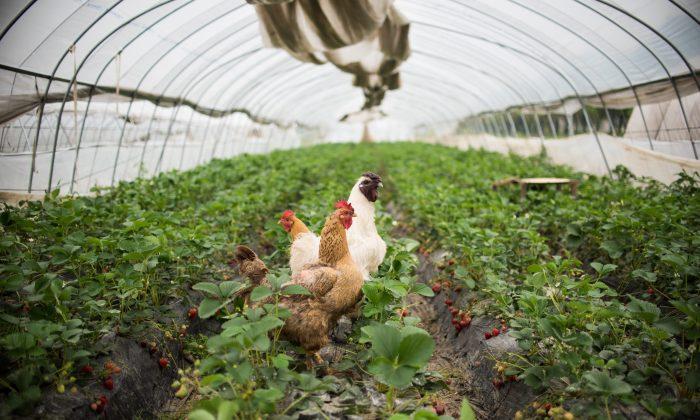Disputes between the United States and China over chicken trade have been especially tense in recent months.
After avian flu broke out in some U.S. commercial poultry flocks in January, China imposed a total ban on all American poultry imports.
On Monday, U.S. Agriculture Secretary Tom Vilsack urged China to reconsider its ban, and allow U.S. poultry from regions unaffected by the avian flu, according to a Reuters report.
According to the U.S. Department of Agriculture (USDA), Thailand and South Korea are among a handful of countries that have imposed a complete ban on raw U.S. poultry because of the outbreak—though the latter allows U.S. processed chicken.
Other importers—European Union, Canada, Mexico, Japan, the United Arab Emirates, Russia, and most other nations—only restrict U.S. poultry from avian-flu-affected states, and otherwise allow U.S. chicken across their borders.
China is a top market for U.S. chicken, at 6 percent share of the chicken export volume, according to Datamyne, a trade data analytics firm. China ranks seventh among countries that import U.S. agricultural goods.
In the first half of 2014, 43 percent of China’s imported chicken was from the United States, says Datamyne.
Vilsack told reporters Monday that China’s agriculture minister expressed concern about U.S. limits on poultry from China.
Currently, the United States only allows three Chinese poultry-processing plants in China to cook chickens for export to the United States—as long as the chicken is sourced from countries with slaughter systems the USDA considers equivalent to America’s. China is not deemed equivalent, which means the chicken processed in China must come from someplace else.
China’s move to ban all U.S. chicken is ironic, given that Chinese chickens have periodically been found to be infected with avian flu. Most recently, in December, authorities in Hong Kong killed 15,000 flu-infected chickens that made their way into local markets from an infected poultry farm in Guangzhou Province, in mainland China.
Due to concerns over the bird flu, Chinese chicken is banned in a number of countries, including Japan, Germany, Ukraine, Pakistan, the Philippines, and Malaysia.
China’s reputation for lax food safety standards (like the time smugglers were caught selling expired chicken feet in Guangxi Province) has prompted U.S. consumers to take action against made-in-China food products.
Last January, a group of concerned parents launched a campaign to ban chicken processed in China from being used in U.S. public school lunch programs. More than 328,000 people signed an online Change.org petition in support of such a ban.
In December, Congress passed an amendment to a federal spending bill, which enacted the school lunch ban.
At the time, U.S. Representative Rosa DeLauro (D-Conn.), who introduced the amendment, said: “Children are among the most susceptible to foodborne illness. We cannot take unnecessary risks with their health.”







Friends Read Free